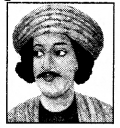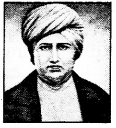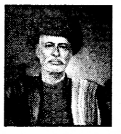RBSE Solutions for Class 7 Social Science Chapter 10 Gender Understanding and Sensitivity are part of RBSE Solutions for Class 7 Social Science. Here we have given Rajasthan Board RBSE Class 7 Social Science Chapter 10 Gender Understanding and Sensitivity.
| Board | RBSE |
| Textbook | SIERT, Rajasthan |
| Class | Class 7 |
| Subject | Social Science |
| Chapter | Chapter 10 |
| Chapter Name | Gender Understanding and Sensitivity |
| Number of Questions Solved | 34 |
| Category | RBSE Solutions |
Rajasthan Board RBSE Class 7 Social Science Chapter 10 Gender Understanding and Sensitivity
Exercise from text book
Question 1.
Choose the correct option.
(1) A child’s first teacher is:
(a) Family
(b) School
(c) Friend
(d) Mother
Answer:
(d) Mother
(2) Meera Bai is famous for:
(a) Politics
(b) Administration
(c) God worship
(d) None
Answer:
(c) God worship
Question 2.
Fill in the Blanks :
(1) ………. is the head of the family in the “Bhama Shah Scheme”.
(2) ……….was instrumental in getting a law framed for banning sati practice.
(3) Women’s ………. and women’s have been set up in every district.
(4) Ishwarchandra Vidyasagar generated awareness in favour of ………….
Answer:
1. Woman
2. Raja Ram Mohan Roy
3. police stations & advisory centres
4. widow re-marriage.
Question 3.
What was the status of women in ancient times?
Answer:
In ancient times, the woman’s status was pleasant. Men, women, boys and girl were equally important. Women were highly educated in that period, who used to participate in dispensing justice with men, for example- Gargi, Mayatrai and Lopamudra. Many vedic treatises were created by women. They also participated in politics and war.
Question 4.
What do you understand by gender sensitivity?
Answer:
By sender sensitivity we mean to have equal feelings towards both men and women. It is also called gender equality. Under this there is no difference in the parenting, educating and curing of health of the child whether male or female, and both get equal opportunity for development.
Question 5.
Which laws have been enacted for empowerment of women?
Answer:
The Government has enacted Dowry Prohibition Law, Child Marriage Act, Sati Prohibition Law, for women empowerment. There is also a provision for penalization in cases of violation of these laws. Apart from this, penal laws have been made to prevent domestic violence against women.
33% of the seats have been reserved for women in the elections of Panchayati Raj system and urban bodies. National and State Women Commis-sions have been formed to help women solve problems. The posts have been reserved for women in government jobs. The law of equal wages has been made for equal work.
Question 6.
Write briefly about the government schemes being run for the upliftment of women.
Answer:
Women’s police stations and women’s advisory and safety centers have been formed in every district for the upliftment of women. Offering scholarship and other facilities for the promotion of girls’ education and to give cycles to girls taking admission in 9th class. Residential schools are being run in educationally backward blocks. Providing employment for women and providing loans for self-employment.
Exemption of fees in registration of properties by the name of women. Allotment of free land for the poor families in the name of women. Sukanya Samridhi scheme for raising funds by saving for higher education of girls, Bhamashan scheme according to this scheme, a woman is the main member of the family, Janani Suraksha Yojan for the betterment of children and women, Beti Bachao, Beti Padhao Yojana for equality of gender and many other such plans are being implemented.
Activities from textbook
Activity (Page 77)
Question 1.
Paste pictures of different social reformers on a chart and write briefly about them. Prepare a list of prominent women who participated in the freedom struggle.
Answer:
Raja Rani Mohan Roy :
Raja Ram Mohan Roy imposed a statutory law against Sati and established Brahma Samaj to overcome the problems spread in the society. He emphasized on the knowledge of education and science. He believed that only through education we can liberate society from the social evils.

Swami Dayanand Saraswati :
He has done remarkable work for women’s education and established the Ar’ya Samaj to bring new’ consciousness to society.

Mahatma Jyotibha Phule :
Jyotibha Phule and his wife Savitri Bai Phule raised voice for women’s miserable and painful situation and worked for women’s upliftment.

List of prominent women freedom fighters :
- Rani Laxmibai
- Annie Besent
- Begum Hazrat Mahal
- Madam Bhikaji Cama
- Kasturba Gandhi
- Sarojni Naidu
- Karnla Nehru
- Vijaya Lakshmi Pandit
- Sucheta Kriplani
- Aruna Asif Ali
- Durga Bai Deshmukh
- Savirti Bai Phule
- Kittur Rani Chennamma
Activity (Page 80)
Question 1
With the help of your teacher, write down the names of the first women to hold these positions in India.
1. President
2. Prime Minister
3. Governor
4. Chief Justice of Supreme Court.
Answer:
President — Praitbha Patil
Prime Minister — Indira Gandhi
Governor — Sarojni Naidu
Note :
Chief Justice of Supreme Court — No one among 45 Chief Justice of India
Judge of Supreme Court — Fatima Bibi
Activity (Page 80)
Question 1
With the help of your teacher, make a list of of Indian women associated with the relevant fields :
1. Famous woman sports person
2. famous woman politician,
3. famous women in other fields.
Answer:
1. Famous sportswomen — Mary Korn
2. Famous woman politician — Indira Gandhi
3. Space traveller — Kalpana Chawla
Writer — Amrita Pritam
Poetess, (now poet) — Mahadevi Verma
Mountaineer — Bachenderi Pal
Journalist — Bhrkha Dutt
Scientist — Janki Ammal
Engineer — Rajeshwari Chatterjee
Activity (Page 81)
Question 1
Find out about the leading women public representatives and those serving in other fields in your area.
Answer:
I am a resident of Town Tehsil of Bharatpur district. The following is a list of the major women working as public representatives of my area and other areas.
- Anita Singh – MLA – Assembly area, Nagar
- Rupa Devi – Pradhan, Panehayat Samiti Nagar
- Sunita Gujjar – Up-pradhan, Panehayat Samiti, Nagar
- Priti Ambesh – Word Councillor – Municipality
- Jyoti Sharma – Junior Engeneer, Jaipur Power Distribution Corporation limited.
(Note : Students must write the list of the women working as public representatives of their own area).
Activity (Page 82)
Question 1
Enquire about the schemes and programmes being run by the government for the empowerment of women in your area.
Answer:
The following schemes are being run by the government for empowerment of women in our area :
- Bhamashah scheme : According to this scheme, a woman is the main member of the family.
- Janani suraksha yojana : This is for the betterment of children and mothers.
- Beti Bachao, Beti Padhao Yojana : This is a program for equality of gender.
- Sukanya Samridhi Yojana : Scheme for raising funds by saving for higher education of girls.
- Land allotment for house : Allotment of free land for the poor families in the name of women.
- To promote girl child education, providing, scholarship and operating residential school in the blocks of every district.
Other important questions
(A) Multiple Choice Questions
Question 1.
The woman who governed the rule in Kashmir was:
(a) Sugandha
(b) Didda
(b) Kota
(d) All the three
Answer:
(d) All the three
Question 2.
Who among the following has worked to promote wbrnen education?
(a) Raja Ram Mohan Roy
(b) Ishwarchand Vidyasagar
(c) Swami Dayanand Saraswati
(d) Savitri Bai Phule
Answer:
(c) Swami Dayanand Saraswati
Question 3.
The upliftment of any society is possible where:
(a) it is a male-dominated society
(b) it is female-dominated society
(c) there is gender sensitivity
(d) entrepreneurship is abundant
Answer:
(c) there is gender sensitivity
(B) Fill in the Blanks
1. There is a ……… tradition of honouring women in our country.
2. The woman is considered to be a symbol of …………. also.
3. In India, women have been adorned with high positions like President, …………, Chief Minister and of Supreme Court of India.
4. Several laws and scheme’s have been created for women’s protection and …………..
Answer:
1. glorious
2. power
3. Prime Minister,Judges
4. Empowerment.
(C) Very Short Answer Type Questions
Question 1.
Who is the first teacher of a child?
Answer:
Mother is the first teacher of a child.
Question 2.
Which of the qualities of women have improved the family, society and the nation?
Answer:
Women have improved the family, society and the nation with their qualities of sacrifice, inspiration, forgiveness, consolation, love and compassion.
Question 3.
What were the evil customs that the women faced in the middle ages?
Answer:
In the middle ages, women had to face many evil customs such as child marriage, sati practice, purda practice, dowry, etc.
Question 4.
In Rajasthan, what percentage of seats has been reserved for women in panchayats and urban bodies?
Answer:
In Rajasthan 33 per cent of seats have been reserved for women in panchayats and urban bodies.
Question 5.
What is the scheme launched for raising funds by saving for higher education of girls?
Answer:
Sukanya Samridfu Yojana is the scheme for raising funds by saving for higher education of girls.
Question 6.
Which campaign is being run for gender equality?
Answer:
“Beti Bachao Beti Padhao” campaign is being organized to bring in gender equality.
(D) Short Answer Type Questions
Question 1.
What kind of approach does our culture have for women?
Answer:
Our cultural perception is that, the family in which good and respectful behaviour is done with women, the gods reside there and happiness, peace and prosperity prevail. But in families where there is no respect for women, there is lack of happiness and prosperity. Peak and prosparity of that family is blocked.
Question 2.
What was the decline in the social status of Indian women during the middle age?
Answer:
The middle age, the people started differentiating between male and female child in matters of education, health and others. Girls were deprived of education. Girls had to face many evil customs such as child marriage, sati practice, purda practice, dowry, etc. Women became dependent on men and due to the responsibilities of domestic work, they were forced to stay within the walls of the house.
Question 3.
What efforts were made to improve women’s status in the 19th century?
Answer:
During the 19th century, social reformers made many efforts to improve the status of women. Raja Ram Mohan Roy imposed a legal ban against Sati custom. Ishwarchand Vidyasagar created awareness in support of widow marriage. Laws were enacted in favour of women’s status. Many efforts have also been made for women’s education and upliftment.
Question 4.
At present what changes do you find in women’s situation?
Answer:
Many efforts have been made for empowerment of women at both social and legal levels. Slowly, the social perceptions are also changing. Today women are also working in such professions as army, police, scientist, doctor, engineer, manager and teacher, lecturers and university level readers, professors. Apart from this, many women are also successfully operating business establishments.
Question 5.
What efforts have been made by women’s organisations for women’s upliftment? .
Answer:
Women frequently raised demand for equality in family and public life. Women’s organizations pulled the attention of society, legislator and the court to this point.
Wherever there is a violation of women’s rights, then the voice is raised against them. An attempt is made to bring justice at the right level. Demand for reservation of 33% seats in the legislative assemblies and parliament for women was successfully raised. Several laws and schemes were created for women’s protection and empowerment.
As a result, things and conditions improved. Later on it because easier for women to struggle against wrong beliefs and practices towards them.
(E) Long Answer Type Questions
Question 1.
What is the difference between gender discrimination and sexual discrimination?
Answer:
Gender difference is biological difference based on the physical form of man and woman, which is the basis of femininity and masculinity. Due to being natural, this kind of difference is same in all places and all time. Sexual discrimination is also called gender inequality. Like it is the responsibility of the women to do all the work within the house.
It is not that men cannot work at home or cannot take care of home, in fact it is a quote from gender discrimination. Similarly, between women and men, there is a gender distinction based on inequality of opportunities, duties and facilities. This retention is a social and cultural construction that change with time and space. Many social values and orthodox beliefs connect gender differences with the biological difference.
Question 2.
Describe the different forms of gender discrimination prevailing in society.
Answer:
There are different forms of gender discrimination prevailing in society, the main part of which is division of labour. During the upbringing of boys and girls, this recognition is given to them that the main responsibility of women is to take care of all the work of the house and to take care of the children. Apart from this, women and girls draw water from far away and collect wood for fuel. They also work on farms, weeding, harvesting, milking and taking care of animals.
However, when we think of the farmer, then in our mind, the image of men farmer emerges rather than a female farmer. The importance of women’s work is also undermined and wages are also given less while in reality women do more labour than men. Women are also less educated than men. At present, the number of girls has increased in the field of education. Many girls leave the school without completing the education due to poverty, lack of educational facilities and other reasons.
It is also believed that girls and women are not able to do technical work. Apart from this, due jto the conservative beliefs, girls cannot find family support to get education and training of many vocations and occupations. There is a big difference in the role and participation of women and men at the community level. Public life is in the possession of men and women are given less participation. They have not been given enough opportunities to lead in community work.
We hope the given RBSE Solutions for Class 7 Social Science Chapter 10 Gender Understanding and Sensitivity will help you. If you have any query regarding Rajasthan Board RBSE Class 7 Social Science Chapter 10 Gender Understanding and Sensitivity, drop a comment below and we will get back to you at the earliest.